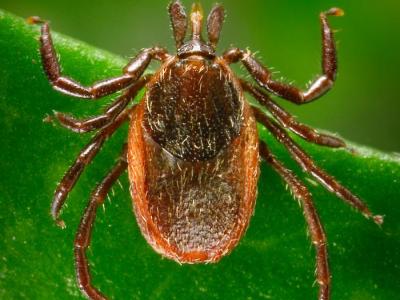Aug 22, 2007 (CIDRAP News) – An international research team working in Gabon has for the first time isolated Marburg virus genetic material and antibodies from a bat species, an animal that experts suspect may play a role in transmitting the virus to humans.
A study detailing the findings was published today in the journal PLoS One (Public Library of Science One). Marburg virus can cause a severe, often fatal, hemorrhagic fever in humans and primates, and there is no vaccine or specific treatment.
The virus's hiding place between human outbreaks has been a mystery, but recent outbreaks in miners in Angola and Uganda have led tropical health experts to suspect that bats may carry it.
The researchers tested more than 1,100 bats representing 10 different species, the report says. Testing was done at five sites in Gabon and the northwestern Republic of Congo.
Genetic analysis of samples showed that only four bats had Marburg-specific RNA, and all of the positive bats were the same species, Rousettus aegyptiacus, a common fruit bat. All the bats that tested positive were trapped at two locations near caves in Gabon.
When investigators looked for Marburg virus antibodies, they noted positive findings in 29 bats, and again, all were Rousettus aegyptiacus.
Blood and genetic test results suggest the bats may be a reservoir for Marburg virus, the authors write, but add, "However, we cannot rule out periodic contact by the bats with an as yet unnamed reservoir." Though the test results were consistent with extended viremia, they could also represent late-stage acute infections, the authors report.
Daniel Bausch, MD, MPH, associate professor of tropical medicine at the Tulane School of Public Health and Tropical Medicine in New Orleans, told CIDRAP News that the findings bring researchers one step closer to finding the reservoir for Marburg virus.
Positive identification of a reservoir requires growing the virus out of a sample, he said. "Until you do that, you're always going to have some questions," said Bausch, who has also been involved with Marburg virus research.
One of the study's most surprising findings was that bats in Gabon had evidence of the virus, Bausch said. That location is far west of where Marburg virus has been found previously in eastern African countries such as the Democratic Republic of the Congo, Angola, and Uganda. That finding raises the possibility that Marburg virus has been recently introduced to Gabon, where scientists have also seen the closely related Ebola virus, he said.
The fruit bat species that produced the Marburg virus findings is found throughout sub-Saharan Africa, the US Centers for Disease Control and Prevention (CDC) said in a news release today.
In the release, CDC Director Dr. Julie Gerberding called the discovery groundbreaking and said it would help world health experts combat the virus. "One of the challenges has been identifying how people become infected. This research brings us closer to understanding the transmission of Marburg virus," she added.
Jonathan Towner, lead author of the study and senior microbiologist at the CDC, is a member of another international team investigating a recent Marburg virus outbreak in Uganda. At least two miners, one of whom died, recently tested positive for the virus. The team is trapping bats at the entrance of the mine where the infected men worked.
The discovery in Gabon helps guide the investigation in Uganda, Towner said in the CDC statement. "From a public health perspective, this discovery offers us new insight into the transmission of Marburg virus and potentially other filoviruses," he commented in another CDC press release.
Towner JS, Pourrut X, Albarino CG, et al. Marburg virus infection detected in common African bat. PLoS One 2007 Aug 22;2(8):e764 [Full text]
See also:
Aug 21 CDC press release
Aug 20 CIDRAP News story "Scientists net bats to look for Marburg virus source"


















